Doctor en nutrición y producción de Rumiantes de la Universidad Federal de Lavras (Brasil) y Zootecnista de la Universidad de Sucre. Linea de investigación en programación fetal. Interesado en entender como vacas lidan con la restricción nutricional durante la gestación para soportar el crecimiento fetal. Por tal razón he trabajado en conocer los cambios específicos de las matrices durante la gestación, así como los factores que contribuyen al lento crecimiento y desarrollo embrionario. El conocimiento obtenido por medio de está línea de investigación ayudará a los investigadores y/o productores a identificar estrategias e intervenciones de manejo para aumentar la eficiencia reproductiva y mitigar las posibles pérdidas de producción asociadas con las consecuencias de programar la descendencia a través del entorno materno en todas las especies de interes zootecnico. Experiencia también en alimentos y alimentación y producción de bovinos en sistemas silvopastoriles.
PROGRAMA: Medicina Veterinaria y Zootecnia (Cartagena)
CATEGORÍA MINCIENCIAS:
NIVEL DE FORMACIÓN: Doctorado
LINEAS DE TRABAJO:
PRODUCTOS DESTACADOS
Effects of monensin and a blend of magnesium oxide on performance, feeding behavior, and rumen morphometrics of Zebu beef cattle fed high-starch diets
Fecha de publicación: 17/09/2024
This study aimed to evaluate the effects of a blend of different sources of magnesium oxide associated or not with monensin, on productive, ruminal, and nutritional parameters of steers. Eighty-four Nellore steers with an initial body weight (BW) of 367.3 ± 37.9 kg were allocated to one of 28 pens, with three steers per pen. Each pen was considered an experimental unit, and using a completely randomized design with a 2 × 2 factorial arrangement, the following treatments were assigned to each pen: (1) Control (CON) – a basal diet without additive inclusion; (2) Magnesium oxide blend (MG) – basal diet plus a magnesium-based product (pHix-up®, Timab Magnesium, Dinard, France) provided at 0.50% of dry matter (DM); (3) Monensin (MON) – basal diet plus 25 mg/ kg of DM of sodium monensin (Rumensin, Elanco Animal Health, Greenfield, IN); and (4) MG association with MON – basal diet plus MG + MON, at the same doses of the individual treatments. The experimental period lasted 100 days. Blood samples were collected on days 0, 13, and 70 to determine D-lactate levels. Daily feed intake was recorded, and animal ingestive behavior was visually observed on days 66 and 67. On day 70, skeletal muscle tissue samples were obtained through biopsy for gene expression analysis. At the end of the experimental period, carcass ultrasonography was conducted. Subsequently, the steers were slaughtered, and rumen epithelium samples were collected for morphometric analysis. The use of monensin, of magnesium oxide blend, and their interactions, were treated as fixed effects, while the pens were considered as a random effect. Statistical differences were considered when P < 0.05. Steers fed MG-containing diets consumed approximately 0.6 kg more dry matter per day than those fed diets without this additive (P = 0.01; 11.3 vs. 11.9 kg/day). The inclusion of MG in the diet increased (P = 0.02) the average daily gain (ADG). There was a greater Longissimus muscle area (LMA) and LMA per 100 kg of body weight (BW) (P ≤ 0.03) for steers-fed diets with MG. Steers fed MON exhibited reduced mRNA expression of the Atrogin-1 and mTOR compared to steers fed MG + MON diets (MON × MG: P ≤ 0.04). Steers fed MON had 6.9% greater feed efficiency (P = 0.02). Papillae width was lesser for CON than other treatments (MON × MG: P = 0.02). In conclusion, the magnesium oxide blend improved performance and carcass traits in high-energy feedlot diets, while monensin enhanced feed efficiency, suggesting potential for their use as alternatives or complements in beef cattle nutrition.
Más información ⇨
- « Anterior
- 1
- 2
- 3
- 4
- …
- 14
- Siguiente »

